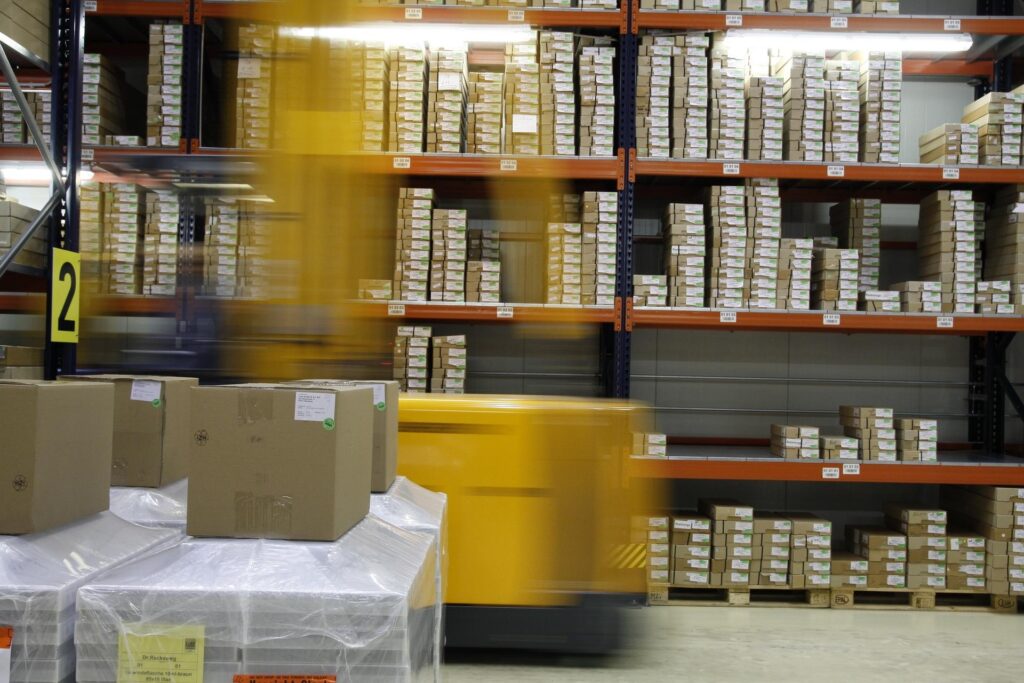The Best Sustainable Warehouse Management Practices for 2025
April 22, 2025

Have you ever wondered if the key to cutting operational costs and saving the planet lies in your warehouse management?
A recent study indicates that warehousing contributes to 7% of the global carbon emissions in the logistics sector. The call to adopt eco-friendly warehouse solutions has never been louder. The new mission now is carbon footprint reduction, achieving resource-efficient warehousing, and adopting sustainable supply chain management practices. But how exactly can warehouse managers succeed?
Let’s find out.
Current Challenges in Warehouse Sustainability
While the push for sustainability in warehousing is gaining momentum by the day, there are several obstacles standing in the way:
High energy consumption
Warehouses consume a lot of power on heating, lighting, and running their equipment.
Traditional lighting systems, especially fluorescent bulbs, are energy-intensive and inefficient, contributing to higher energy bills and increased emissions.
Waste generation and disposal
Warehouses generate 1 lb per 100 square feet of waste daily.
Just how much waste does the average 17,500-square-foot warehouse produce per day?
This waste comes from excess packaging materials, damaged goods, and outdated equipment.
Most of it ends up in landfills, worsening the industry’s environmental impact on logistics. And while sustainable packaging solutions and recycling can help, many warehouses still lack the resources to make the change.
Lack of efficient resource management
Traditional warehouses suffer from inefficient resource management. It could be an inefficient inventory system with poor inventory tracking or an HVAC system that runs continuously without smart controls.
While efficient resource warehousing can boost lead time by 41.4% and value-added time by up to 82%, many warehouses still lag in realizing it.
Eco-Friendly Warehouse Solutions to Implement by 2025
With some innovations that balance environmental responsibility and operational efficiency, warehouses can actually reduce their carbon footprint.
That said, here are the best eco-friendly warehouse solutions to consider:
Energy-efficient lighting solutions
One of the most straightforward yet effective warehouse energy management strategies is transitioning to energy-efficient lighting. LEDs, especially STAR-rated ones, consume 75% less energy and last up to 25 times longer than traditional lighting.
You can pair LED lighting with motion sensors, ensuring the lights stay on only when necessary, reducing energy wastage, costs, and emissions.
Optimizing HVAC systems
HVAC systems are among the top energy consumers, contributing to 32% of energy consumption in commercial settings in the U.S.
To lower these costs, warehouses should:
- Conduct regular maintenance and timely upgrades.
- Install smart thermostats and controls for precise temperature control. These adapt to real-time conditions, such as weather and occupancy, reducing energy wastage and costs.
Sustainable packaging solutions
Packaging is integral in carbon footprint reduction and green logistics. To achieve these goals, warehouses can:
- Transition to biodegradable and recyclable materials, such as mushroom packaging, cornstarch-based plastics, kraft paper, and polylactic acid (PLA) plastics. These reduce waste and align with sustainable supply chain management.
- Design packaging for minimal waste, such as using smaller boxes or eliminating unnecessary fillers.
Sustainable packaging benefits the environment and resonates with 82% of consumers willing to pay more for sustainable packaging.
Technology Integration for Sustainable Warehouses
Warehouse managers are quickly realizing that technology can help them realize their sustainability goals.
Of all the technology they can use, the following stand out:
Internet of Things (IoT)
IoT makes it easy for warehouse managers to monitor how they use resources in real time.
This tech uses sensors to collect data on resource consumption and provide invaluable insights that managers can use to identify and eliminate inefficiencies.
Artificial intelligence (AI)
Warehouse managers can use AI to optimize warehouse layouts and workflows to minimize how much energy they consume and the space they use.
They can also use AI-powered predictive analytics to assess historical data to accurately predict demand so they can store inventory in energy-efficient locations.
Case Studies: Successful Sustainable Warehouses
Several warehouses prove climate change mitigation in logistics is achievable, earning LEED certification for warehouses.
The Coca-Cola facility in Uberlandia, Brazil
This facility has become the world’s first LEED Zero Coca-Cola facility for zero-waste efforts. It installed a photovoltaic lighting system that generates 100% of the energy it needs and an ultra-efficient LED lighting system with motion sensors.
Its rainwater harvesting system and advanced water treatment processes have cut water usage by 94%! The facility reuses, recycles, or up-cycles 97.9% of its water and diverts 91% of construction waste from landfills.
The Carlisle Companies Incorporated facility in Sikeston, Missouri
This facility has earned a LEED Premium certification for prioritizing renewable energy for warehouses. It reduced its reliance on traditional energy by installing an 823 kW on-site solar array that satisfies over 10% of its energy needs.
The facility also incorporated a 100kW battery system and demand response strategies, reducing its energy load by 10% without operational disruptions!
Power Up Sustainable Warehousing with HireQuest National Accounts
Sustainable warehouse management is no longer optional—it’s a competitive must for 2025. From cutting emissions to streamlining operations, going green can boost efficiency and attract today’s eco-conscious brands and consumers.
Whether you're looking for short-term labor or strategic, long-term workforce solutions, HireQuest’s National Accounts team is your single point of entry. We’ll connect you to the right staffing division—Snelling Staffing, HireQuest Direct, or MRINetwork—based on your specific manufacturing needs.
Ready to build a smarter, greener workforce?







